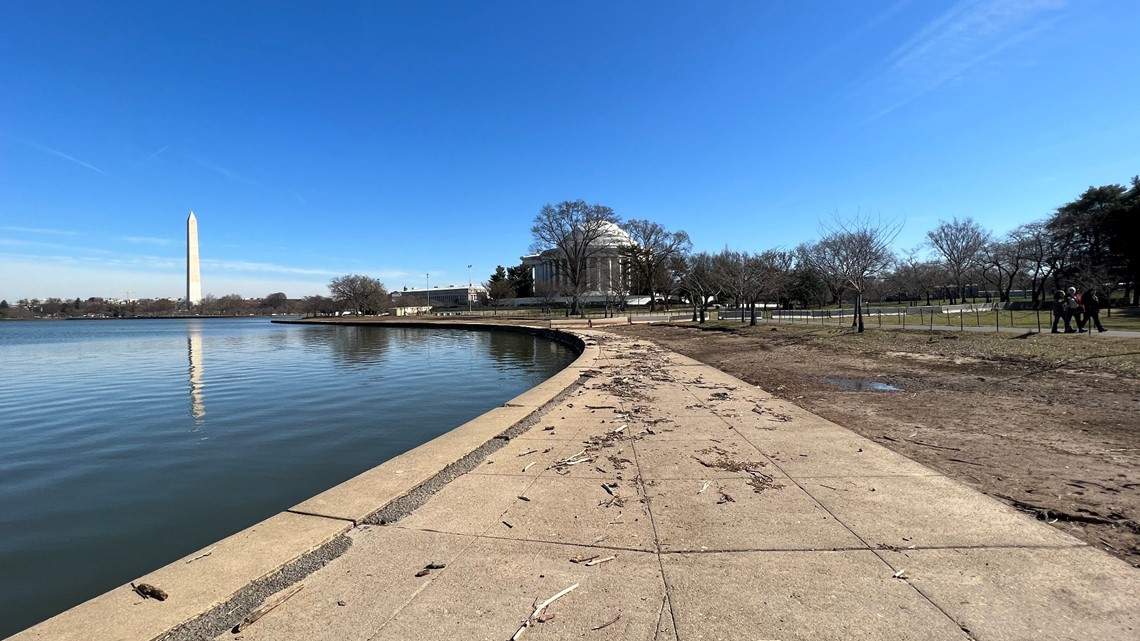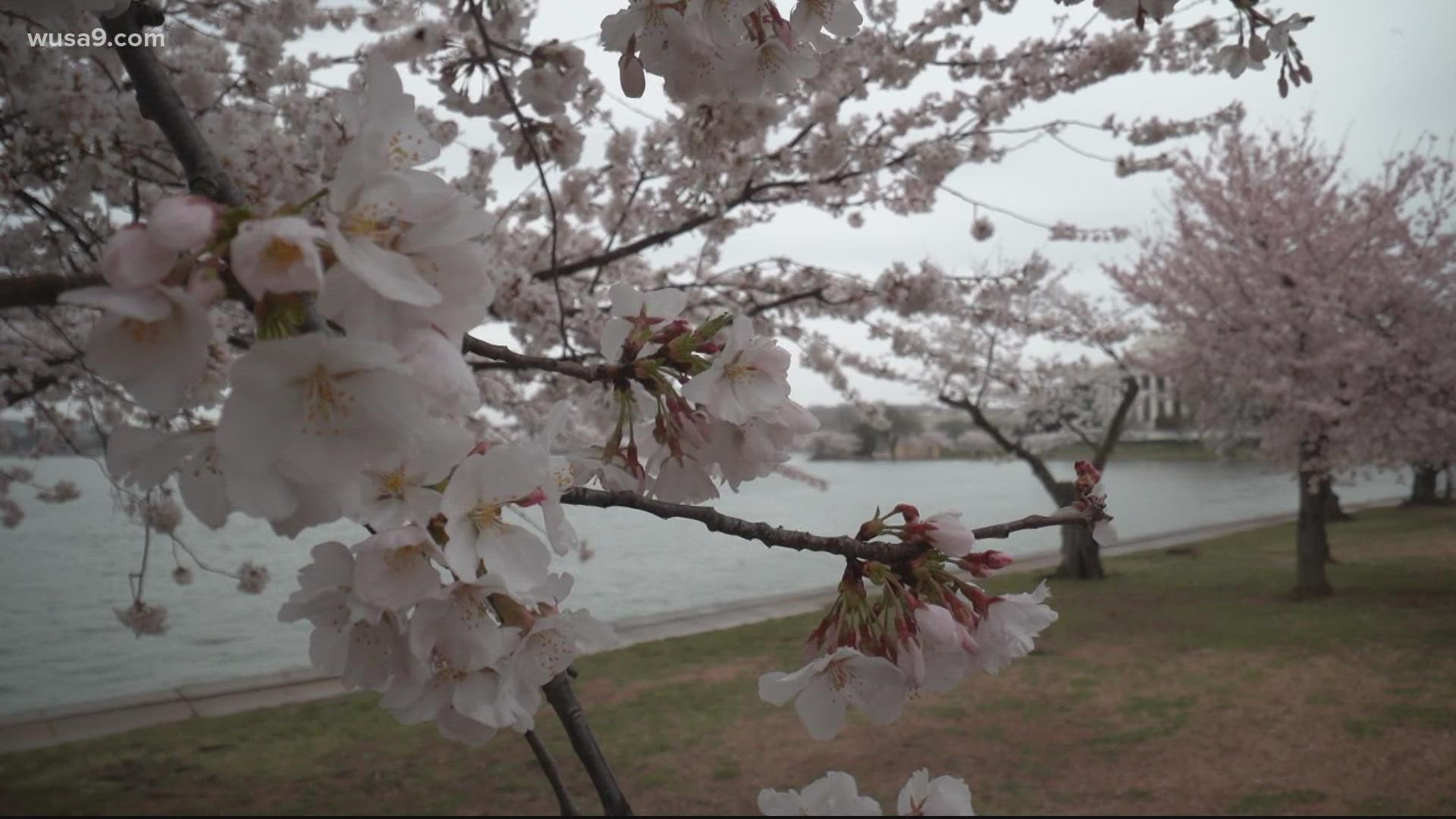WASHINGTON — The average date of peak bloom is April 3 or April 4, but this year peak bloom occurred Monday: a full 10 days ahead of schedule.
While there certainly have been years with peak bloom after the average date, the trend has undeniably been earlier than normal and it's linked to rising temperatures.
“What we have seen over the last 100 years or so is both the average date getting earlier by about six days, while at the same time we have seen temperatures on the Tidal Basin increase a statistically significant 2.4 degrees,” explains Mike Litterst with the National Park Service. He got his start with NPS back in 1983 as a volunteer in high school and he has seen firsthand the hardships the historic cherry blossoms have gone through.
"Acid rain at that time was actually something that we were dealing with [that caused concern] as far as the Monuments and Memorials,” explained Litterst. "Climate change wasn't anything that was on anyone's radar."
But now our warming planet is altering one of D.C.'s biggest spring-time traditions and making the prediction of peak bloom even more difficult. There are several factors that go into the prediction process.
The first is the forecast; both the near and long term, looking specifically at temperatures and how warm they will be. The second is historical data, looking back at trends from previous years and how the weather impacted the peak bloom date.
The third factor is the trees themselves. There are several indicator trees that bloom ahead of the rest, so the National Park Service will monitor their progress to determine when peak bloom for the rest of the basin may be.
As our climate evolves we’ve also seen more tumultuous temperature swings and weather extremes. In 2017, a late-season hard frost resulted in the loss of 50% of the cherry blossoms.
“And here we were this year with trees, stage two, stage three, and we had temperatures once again in the low 20s,” says Litterst. “Fortunately the trees weren’t quite far enough along for that to create a problem, but that’s twice in the last five years we’ve seen those wild temperature swings threaten the blossoms.”
But rising temperatures are only part of the equation when it comes to threats along the tidal basin. Repetitive flooding is another great concern.
“What we’re seeing on the Tidal Basin is not only sea-level rise but at the same time we’re seeing the seawall sink because they weren’t sunk to bedrock when they were built,” explains Litterest.
The walking trail was moved farther inland in the late 90s and since then, the degree and frequency of flooding have increased. For parts of the Tidal Basin that means twice a day, every day, the brackish water of the Tidal Basin overflows the banks and inundates the roots of the cherry trees.


Passersby can see the debris that gets washed up and where the water is cutting away at the roots and eroding the earth surrounding them. The National Park Service had to remove more than a dozen trees in the area a few years ago due to flooding damage.
So what’s the solution? The Tidal Basin Ideas Lab has brought together five leading American landscape architecture firms, each with a distinctive proposal. The purpose of this committee is to encourage collective thinking around how to best reconstruct the Tidal Basin instead of a conventional design competition that selects one winner.
William Nardin, an Assistant Professor at the University of Maryland Center for Environmental Science is on the Advisory Committee. While there is a long road ahead, he remains hopeful that the bright minds of the Ideas Lab will come up with a solution to save such a critical landmark in our Nation’s capital.
“We have a hundred years of experience with the concrete and the infrastructure. What we’re doing as scientists now is trying to develop tools for all engineers to be able to design a more natural way,” says Nardin. “So this is the challenge right now. And we are working on it. We’re doing a lot of designing and a lot of monitoring to understand if it’s being designed the correct way so it’s really now a new science.”
But don’t expect changes anytime soon. The Tidal Basin reconstruction is a 150-year plan that will require an estimated $500 million in repairs and upgrades funded by the National Trust for Historic Preservation.

